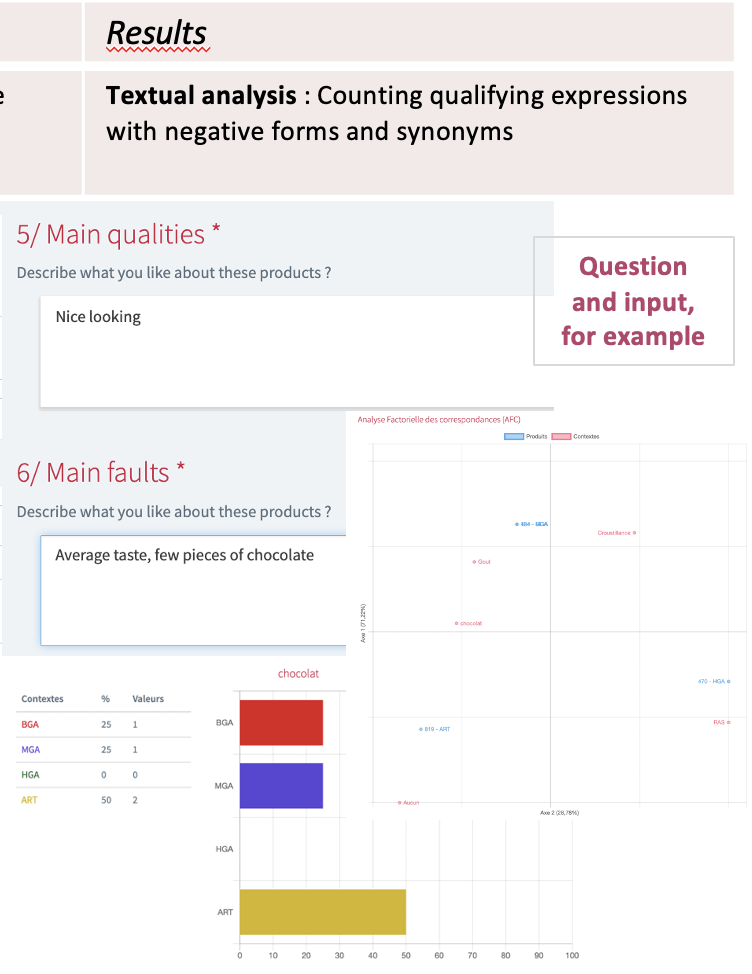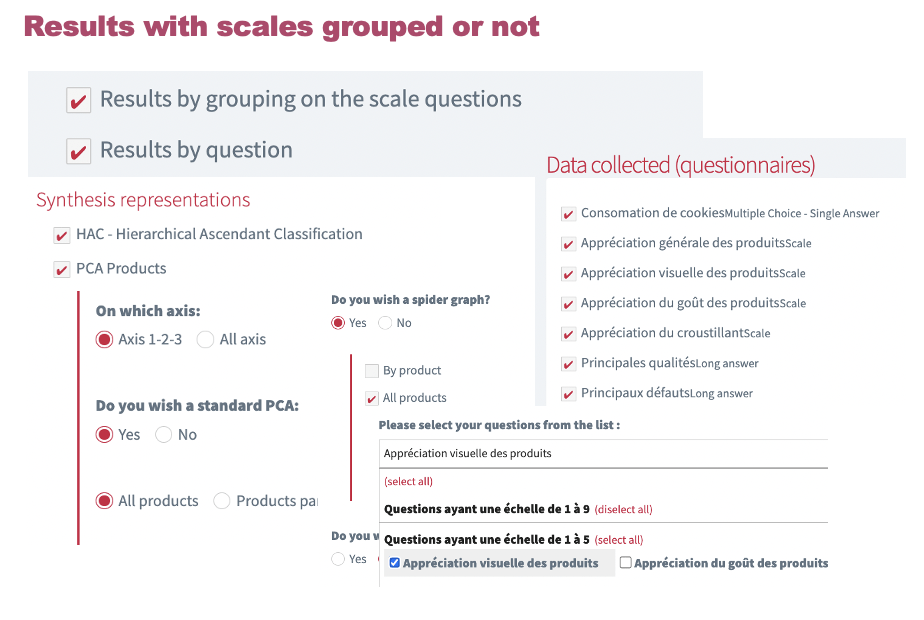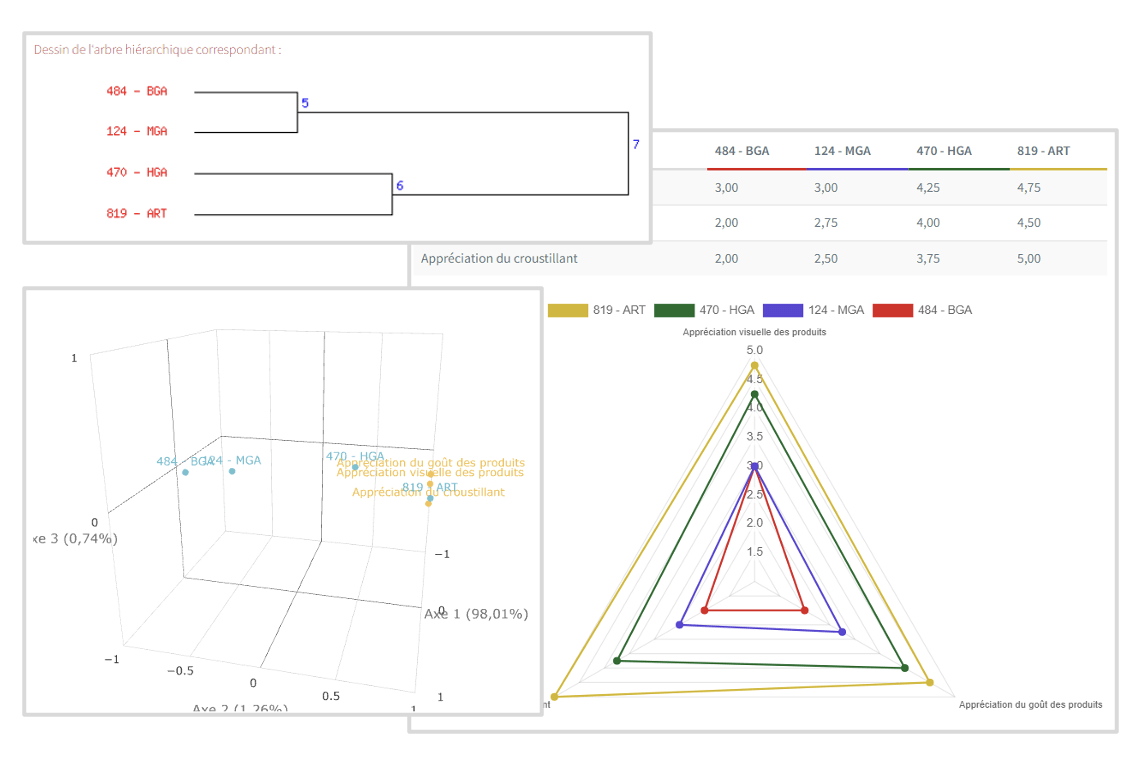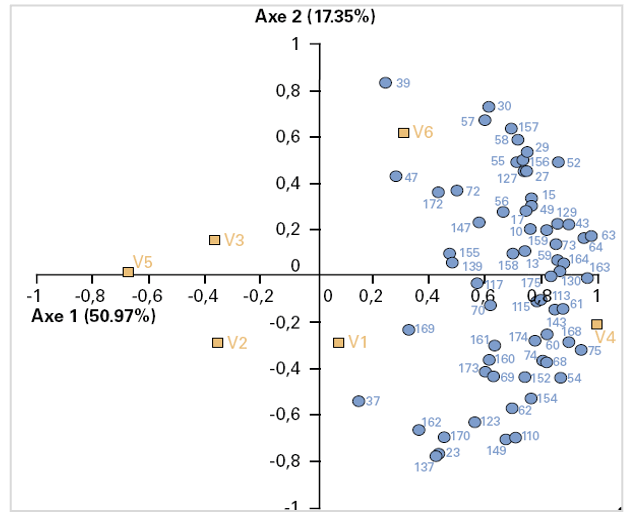TASTELWEB® : consumer tests are new!
What type of consumer tests does Tastelweb® cover ?
#1: product testing.
Evaluation of products at the organoleptic level, packaging.
Tastelweb® allows :
1/ a collection of the appreciation, the preference between products
2/ a collection of qualities and faults
3/ a comparison with your appreciation history
4/ a correlation with product descriptions

#2 : intention questionnaires.
Tastelweb® also collects :
1/ consumption habits
2/ purchasing intentions
3/ the brands purchased
4/ frequented stores,...

8 reasons to choose Tastelweb® to conduct its consumer tests !
#1 : Ergonomic, easy to use, modern.
A new test,
inspired by the most ergonomic solutions on the market.
- Questionnaire : easy to configure, easy choice of questions, speed
- Consumers : open questionnaire, mobile input possible on smartphone.
#2 : Main consumer test questions
Many open questions :
- Long texts : qualities and defects,...
- Numerical values, dates,…
Many closed questions :
- Assessment scales
- Multiple choices, CATA (Check-All-That-Apply)…
- Cross tables, JAR scales (too little, correct, too strong…)
- Rankings

#3 : Balance experimental plans / service order.
It is possible to impose or not the order of service / the direction of evaluation of the products to the panelists.
- The manual (or "none"), "random", "Latin square" modes make it possible to avoid follow-on effects, whether a product is systematically penalized by a characteristic of the previous product.
- The "free" mode allows you to impose nothing. The consumer organizes his evaluation as he sees fit.
#4 : Evaluation sheets to be downloaded by the respondents.
Consumers have the ability to keep track of their questionnaire and responses.
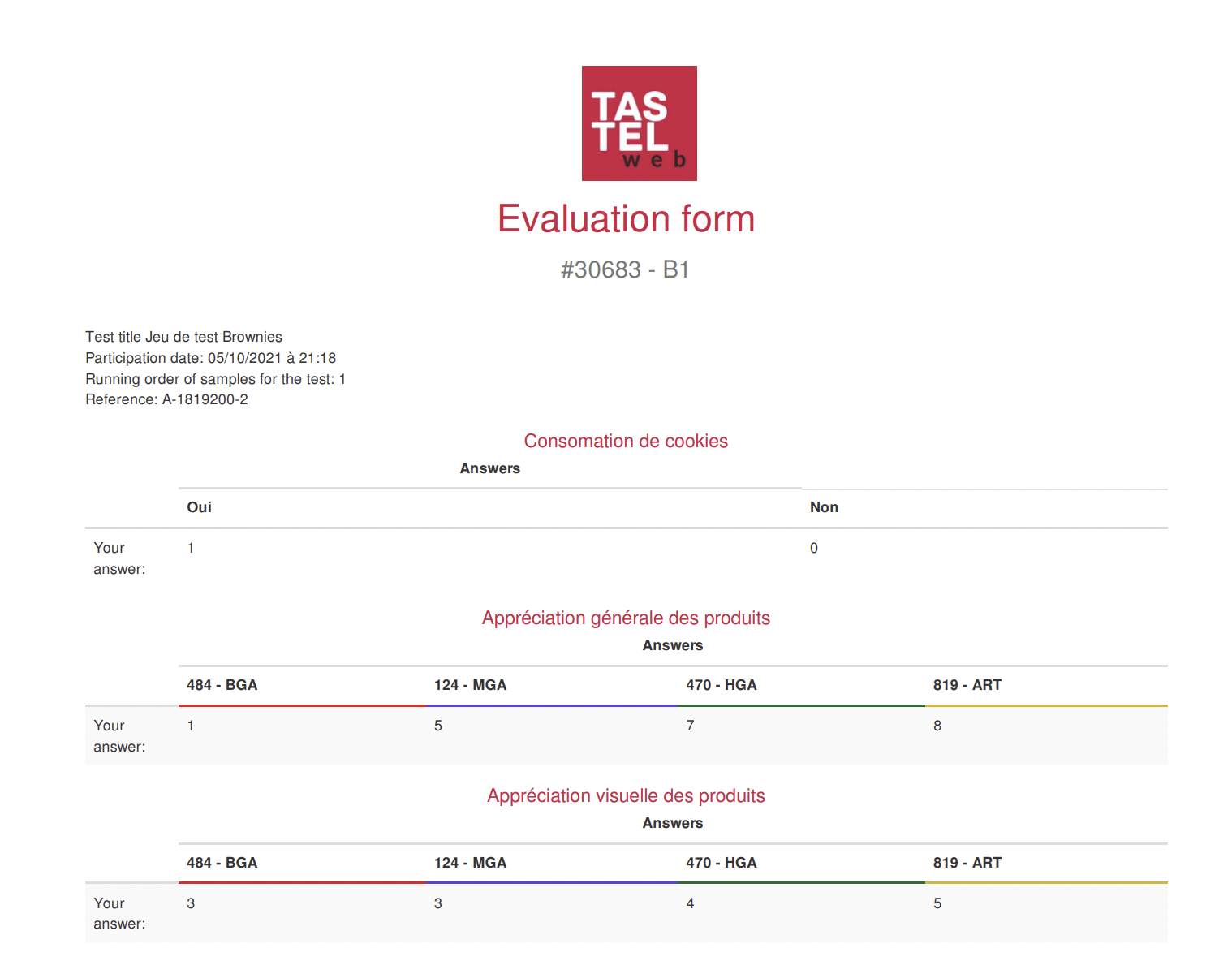
#5 : Long texts - the power of textual analysis.
Tastelweb® makes it possible to process totally free expression!
This is made possible thanks to the company's experience since 1995 on this subject as well as the latest technical advances from Google on the identification of words in a text.
From comments or, for example, faults or qualities requested in free text from panelists, the frequencies of the most important qualifiers can be identified and calculated by product, almost automatically.
These results make it possible to describe and compare the products with each other in a completely open manner, without these terms having been suggested beforehand to the panelists.
➡️ Citation for the Innovation Trophies - Vinitech 2022
No. 6: Advanced processing to better differentiate products.
Tastelweb® can process:
- interactions between products
- correlations between products and descriptors
- the significance of the differences
(taking into account the variability of responses)
#7 : Filter, sort consumers according to profile criteria.
Gender, age group, consumption habits, places of purchase...
- consumer invitation : it is possible to easily select the people we are interested in interviewing (from a list of respondents integrated into Tastelweb, with their profile criteria)
- test results : it is easy to zoom in on a segment of consumers, and to show the results of the evaluation / survey.
No. 8: Other results processing options.
Tastelweb® allows you to:
- represent the appreciation of each panelist in relation to the different products, on the same ACP (internal preference mapping)
- cross-reference the preference data with a sensory description of the products (external preference mapping)
- cross-reference preference data according to analytical data characterizing the products (pH, acidity, sugar level, etc.)
2022 : objectives for improvements and novelties about to be achieved !
A new test to come :
No. 1: The Qualitative profile.
The Qualitative profile remains a method very suitable for products which are essentially evaluated on olfactory perceptions ; this new test differs from the classic/QDA profile by these two major differences :
1/ Descriptors are qualitative in nature with intensity progressions based on tick marks with a label, instead of being based on quantified intensity scales.
2/ The processing is based on counts, and therefore depends on the occurrences of each of these ticks instead of the averages from the intensity scales.

New functions to come :
#2 : System of interrogation or queries on the product database.
It will be possible to query product-related data more easily, for example, which products are of the same type, how many tests have been carried out on a given product, or even what is the characteristic of this product based on the information which will be those which:
- identify these products more precisely: grape variety, supplier, factory, supplier, for example
- characterize these products: pH, acidity, amino acids, sugars, etc.
This optimized search system will then make it possible to easily gather and query to bring out all the information associated with a product.

New functions to come :
N°3: Classic profile (QDA): the power of textual analysis.
This analysis will be included in this test to process free comments!








